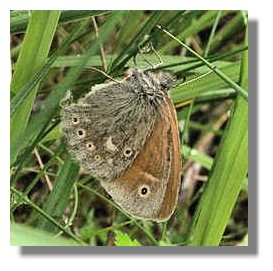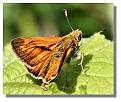
Graphic via Wikimedia
Butterflies of Scotland
- Large Heath (Coenonympha tullia)

Some Large Heath butterflies have row of 'eyespots' on underwings, like Ringlet, but some don't. Those without can look like Small Heath. The size of the underwing spots varies across its range; a heavily spotted form (davus) is found in lowland England, a virtually spotless race (scotica) in northern Scotland, and a range of intermediate races elsewhere (referred to as polydama). The Large Heath is restricted to wet boggy habitats in northern Britain, Ireland, and a few isolated sites in Wales and central England.Adults always sit with their wings closed and can fly even in quite dull weather provided the air temperature is higher than 14C and it is not too windy. The Large Heath has declined seriously in England and Wales, but is still widespread in parts of Ireland and Scotland. The Large Heath is a Priority Species for conservation due to the continued loss of habitat and resulting drop in population.
The Large Heath breeds in open wet areas where the larval food plant are abundant, such as Lowland raised bogs, upland blanket bogs and damp acidic moorland.
The main foodplant of the Large Heath is Hare's-tail Cottongrass (Eriophorum vaginatum). Larvae may also feed on Common Cottongrass (Eriophorum angustifolium) and Jointed Rush (Juncus articulatus).
Return to the Butterfly Index
or go to the next Butterfly:  Large Skipper.
Large Skipper.
Where else would you like to go in Scotland?

